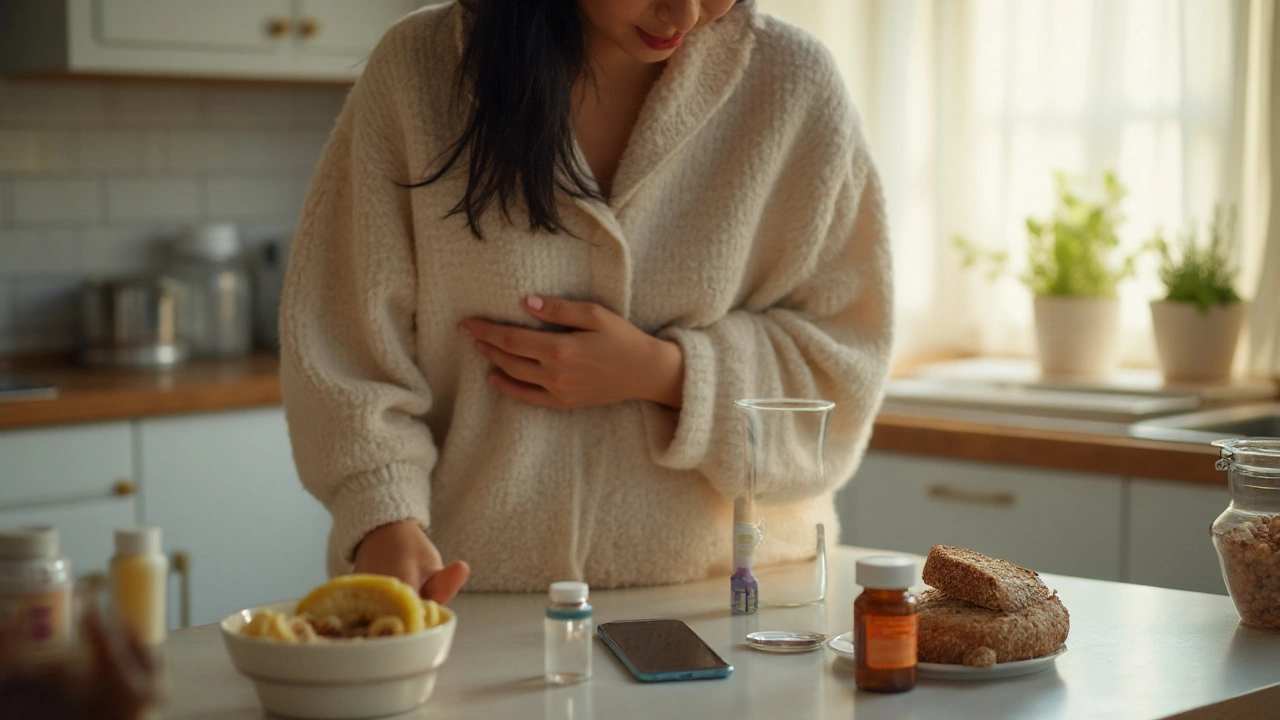Peptic Ulcer: What It Is, Why It Happens, and How to Treat It
If you’ve ever felt a burning pain in your upper stomach after a meal, chances are you’ve wondered whether it’s just heartburn or something deeper. A peptic ulcer is an open sore that forms on the lining of the stomach, small intestine, or esophagus. Unlike a simple irritation, an ulcer actually eats away at the protective mucus layer, exposing raw tissue to harsh digestive acids.
Common Causes of Peptic Ulcers
The two biggest culprits are Helicobacter pylori (H. pylori) infection and long‑term use of non‑steroidal anti‑inflammatory drugs (NSAIDs) like ibuprofen or aspirin. H. pylori is a bacteria that lives in the stomach lining and can weaken its defenses. NSAIDs block the production of prostaglandins, chemicals that help keep the stomach’s mucus thick. Alcohol, smoking, and stress don’t cause ulcers directly, but they make healing harder and can worsen symptoms.
Symptoms and When to See a Doctor
Typical signs include a gnawing or burning ache between the breastbone and belly button, especially when the stomach is empty. You might notice nausea, bloating, or a feeling of fullness after just a few bites. In serious cases, blood can appear in vomit (looking like coffee grounds) or black, tarry stools. If any of these happen, get medical help right away—delaying treatment can lead to bleeding or perforation.Most people catch an ulcer early by noticing the pattern of pain: it eases after eating or taking antacids and returns a few hours later. Keeping a symptom diary helps your doctor pinpoint triggers and choose the best test, usually a breath, stool, or endoscopy exam.
Treatment starts with eradicating H. pylori if it’s present. Doctors prescribe a combo of two antibiotics plus a proton‑pump inhibitor (PPI) for 10–14 days. If NSAIDs are the cause, stopping them and switching to acetaminophen can give your stomach a break. PPIs like omeprazole or lansoprazole reduce acid production, allowing the ulcer to heal faster.
Beyond medication, simple lifestyle tweaks speed up recovery. Eat smaller, more frequent meals instead of large heavy ones. Avoid spicy foods, caffeine, and alcohol until symptoms subside. Quit smoking—nicotine reduces blood flow to the stomach lining, slowing healing.
Most ulcers heal within a few weeks with proper treatment. However, recurrence is common if you keep using NSAIDs or don’t finish the full antibiotic course. Regular follow‑up appointments let your doctor check that the ulcer has closed and adjust therapy if needed.
Prevention is easier than cure. Use over‑the‑counter pain relievers sparingly, always with food, and talk to your pharmacist about alternatives if you need long‑term relief. If you have a history of ulcers, ask for a low‑dose PPI as a protective measure when taking necessary NSAIDs.
Remember, a peptic ulcer isn’t something you just live with—it’s a sign that your stomach lining is under attack. With the right diagnosis, medication, and habit changes, you can get back to feeling normal without that constant burning.

Ulcers and Constipation: Causes, Safe Relief, and When to Worry
Finnegan O'Sullivan Aug 27 6Understand how ulcers and constipation interact, what actually causes the overlap, and how to treat both safely. Clear steps, meds to tweak, red flags.
More Detail